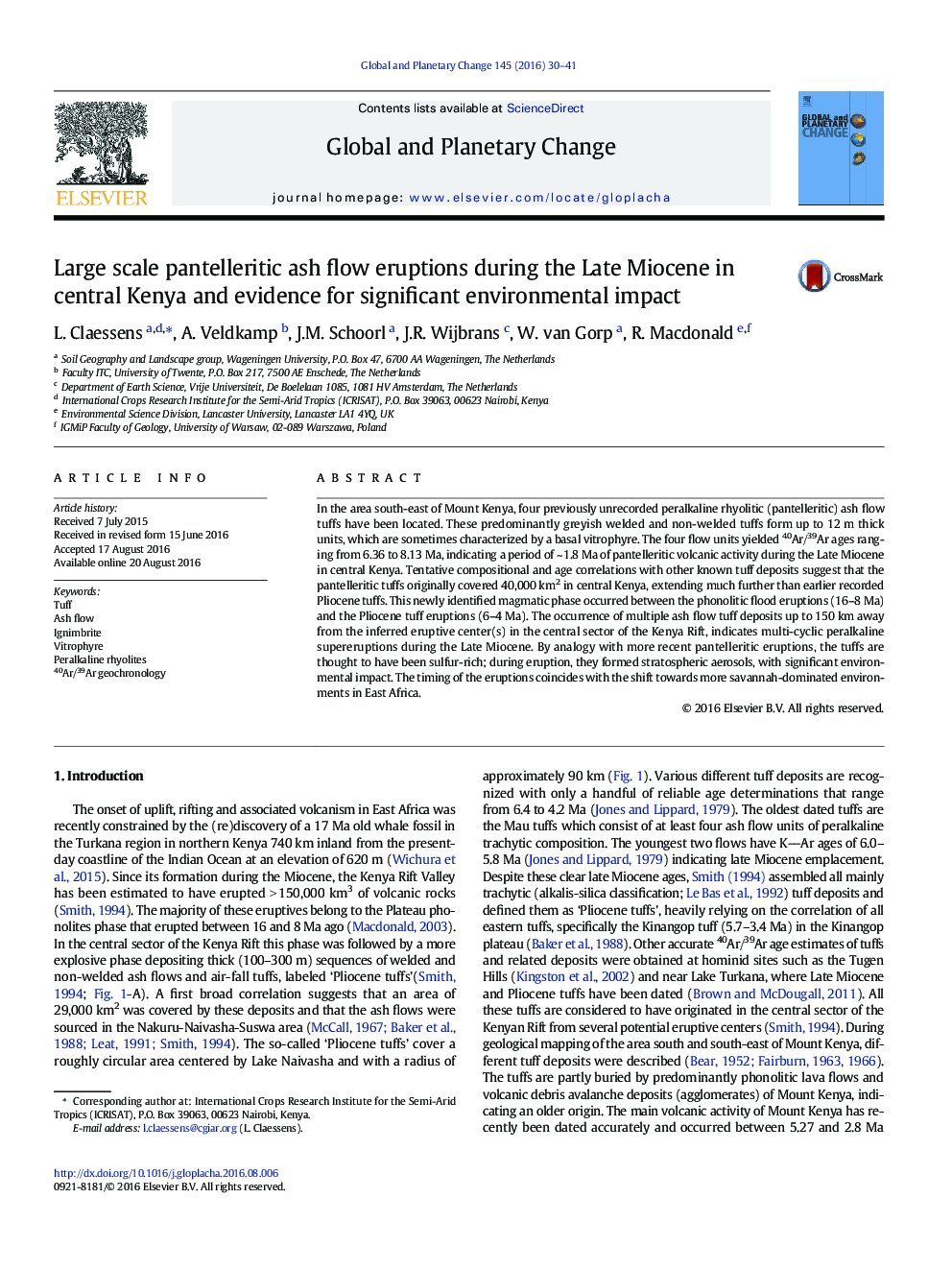| Article ID | Journal | Published Year | Pages | File Type |
|---|---|---|---|---|
| 6347900 | Global and Planetary Change | 2016 | 12 Pages |
Abstract
In the area south-east of Mount Kenya, four previously unrecorded peralkaline rhyolitic (pantelleritic) ash flow tuffs have been located. These predominantly greyish welded and non-welded tuffs form up to 12Â m thick units, which are sometimes characterized by a basal vitrophyre. The four flow units yielded 40Ar/39Ar ages ranging from 6.36 to 8.13Â Ma, indicating a period of ~Â 1.8Â Ma of pantelleritic volcanic activity during the Late Miocene in central Kenya. Tentative compositional and age correlations with other known tuff deposits suggest that the pantelleritic tuffs originally covered 40,000Â km2 in central Kenya, extending much further than earlier recorded Pliocene tuffs. This newly identified magmatic phase occurred between the phonolitic flood eruptions (16-8Â Ma) and the Pliocene tuff eruptions (6-4Â Ma). The occurrence of multiple ash flow tuff deposits up to 150Â km away from the inferred eruptive center(s) in the central sector of the Kenya Rift, indicates multi-cyclic peralkaline supereruptions during the Late Miocene. By analogy with more recent pantelleritic eruptions, the tuffs are thought to have been sulfur-rich; during eruption, they formed stratospheric aerosols, with significant environmental impact. The timing of the eruptions coincides with the shift towards more savannah-dominated environments in East Africa.
Related Topics
Physical Sciences and Engineering
Earth and Planetary Sciences
Earth-Surface Processes
Authors
L. Claessens, A. Veldkamp, J.M. Schoorl, J.R. Wijbrans, W. van Gorp, R. Macdonald,
